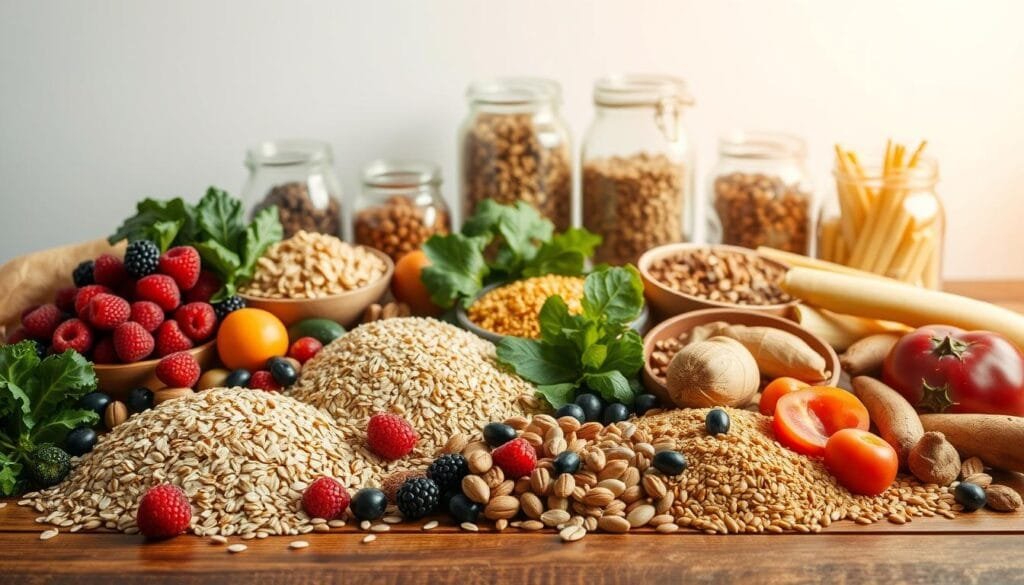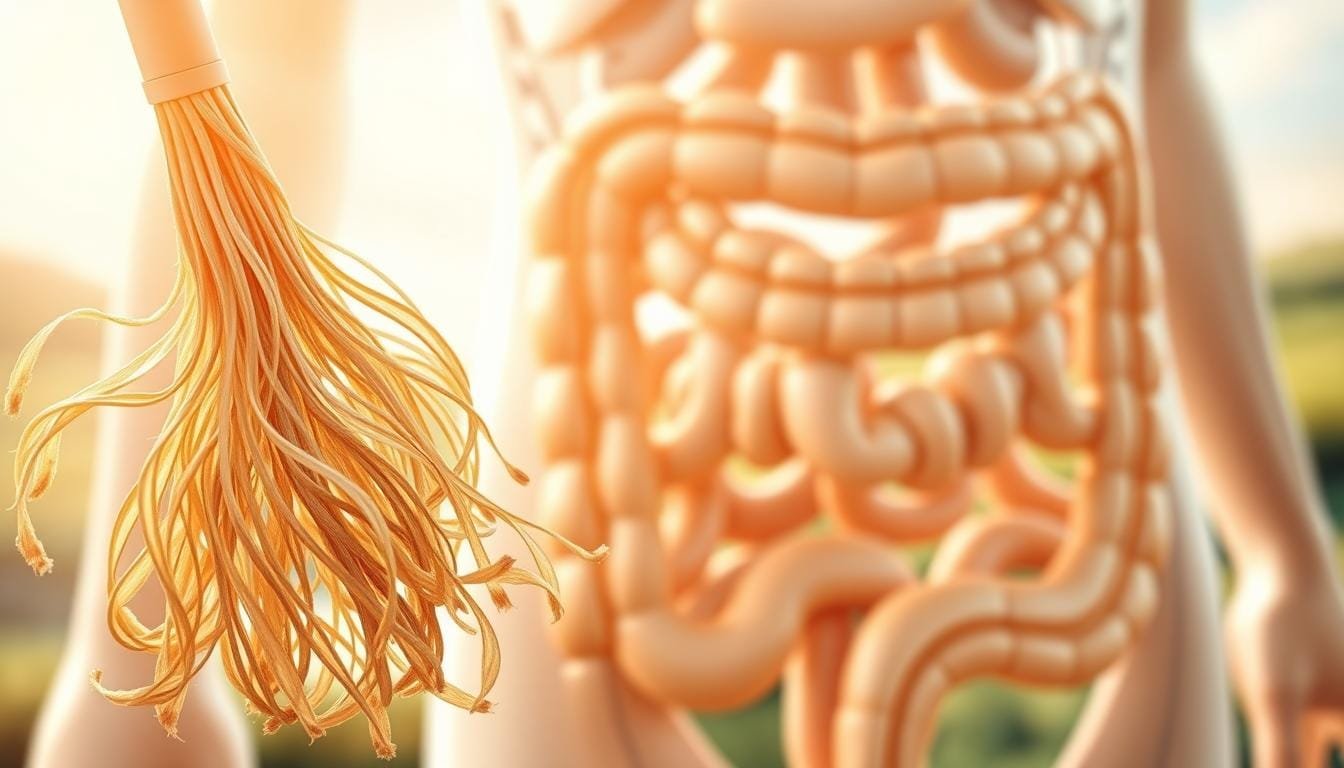Currently Empty: RM0.00
Ever wondered why some people feel sluggish despite eating “clean”? The answer might lie in an overlooked hero—dietary fiber. Wellness Concept dives into how this natural powerhouse supports the body’s detox processes, offering a science-backed approach to wellness.
Modern lifestyles expose people to toxins through processed foods and environmental pollutants. Just like a house needs regular cleaning, the body benefits from gentle, consistent detoxification. Unlike extreme diets, fiber works naturally to eliminate waste, keeping systems running smoothly.
Wellness Concept breaks down the facts, separating myths from proven methods. Their approach focuses on sustainable habits, not quick fixes. By understanding how fiber aids detox, readers can make informed choices for long-term health.
Key Takeaways
- Dietary fiber helps the body remove toxins naturally.
- Processed foods increase toxin exposure, making detox support essential.
- Wellness Concept emphasizes science over fad diets.
- Fiber acts like an internal cleaner, promoting balance.
- Small, consistent changes yield better results than extreme detox plans.
Introduction to Detoxification and Fiber
Many people don’t realize how their bodies handle toxins daily. Detoxification is the natural process of removing harmful substances, and it happens around the clock. Without it, waste buildup could disrupt energy levels and overall health.
- Internal: Metabolic byproducts like urea and lactic acid.
- External: Pollution, pesticides, and processed food additives.
The WHO estimates urban populations face higher exposure risks, especially in industrial areas.
The body natural detox system relies on organs like:
- Liver: Filters blood and breaks down chemicals.
- Kidneys: Remove waste through urine.
- Gut: Eliminates toxins via digestion.
Over 80% of detox happens in the liver and intestines.
Diet plays a crucial role. Foods rich in dietary fiber act like a broom, sweeping toxins out efficiently. This gentle support helps the body maintain balance without extreme measures.
The Science Behind Fiber’s Role in Detoxification
Modern science reveals how everyday toxins quietly impact health—until fiber steps in. These substances, from pollution to food additives, overwhelm the body without proper elimination. Understanding the process helps harness fiber’s power effectively.
How Toxins Accumulate in the Body
Toxins enter through food, air, and even skincare. The liver filters 1.4 liters of blood every minute, but some compounds slip back into circulation. Without enough fiber, they recirculate, increasing oxidative stress.
The Body’s Natural Detoxification System
Detox happens in three phases:
- Phase I: Liver enzymes break down toxins.
- Phase II: Compounds bind to toxins for excretion.
- Phase III: Transporters remove them via bile or urine.
The gut microbiome adds another layer, processing 3 pounds of waste daily. Fiber ensures this system doesn’t stall.
Why Fiber Is a Detox Powerhouse
Soluble fiber binds to bile acids, carrying toxins out. Studies show it boosts bile production by 30%. Meanwhile, insoluble fiber adds bulk, speeding up elimination. Together, they reduce toxin reabsorption.
Research confirms fiber activates detox enzymes, enhancing the liver’s efficiency.
Understanding Fiber and Its Types
Not all dietary fibers work the same way—understanding their types unlocks better digestion and detox. One dissolves like gel, while the other scrubs like a brush. Both are essential for a healthy gut.
Soluble Fiber: The Gut’s Best Friend
Soluble fiber absorbs water, forming a gel that slows digestion. This helps bind toxins like bile acids, removing them safely. Studies show it can absorb 10x its weight in water, making it a powerhouse for gut health.
Top food sources include:
- Oats and barley
- Apples and citrus fruits
- Beans and lentils
Insoluble Fiber: Nature’s Broom
Insoluble fiber adds bulk to stool, speeding up bowel transit by 40%. Unlike its soluble counterpart, it doesn’t dissolve, acting like a scrubber for the intestines. This prevents toxin buildup and supports regularity.
Best sources are:
- Whole grains (brown rice, quinoa)
- Vegetables (carrots, celery)
- Nuts and seeds
| Property | Soluble Fiber | Insoluble Fiber |
|---|---|---|
| Texture | Gel-forming | Bulky |
| Primary Benefit | Toxin binding | Bowel regularity |
| Fermentability | High (feeds gut bacteria) | Low |
The WHO recommends a 3:1 ratio of insoluble to soluble fiber for optimal digestion and detox.
Confused about fiber classifications? Many think all fibers are equal, but their functions differ. For a deeper dive into the health benefits of fiber, explore how to balance both types daily.
Benefits of Fiber for Detoxification
What if one simple nutrient could supercharge your body’s natural detox systems? Research reveals how dietary choices benefit organs like the liver and kidneys, while balancing the gut microbiome. Unlike harsh cleanses, this approach works with your biology.

Supporting Liver and Kidney Function
The liver processes toxins daily, but fiber lightens its load. Soluble types bind to bile acids, carrying waste out efficiently. Studies show high-fiber diets reduce kidney nitrogen by 25%, easing filtration.
Short-chain fatty acids (SCFAs), produced when fiber ferments, fuel liver cells. This boosts detox enzyme activity by 70%, per clinical trials. It’s like giving your internal filters a tune-up.
Balancing Gut Microbiome
A thriving gut microbiome neutralizes toxins before they circulate. Fiber feeds beneficial bacteria, which then break down harmful compounds. For example, certain microbes transform heavy metals into less toxic forms.
Microbiome diversity drops by 40% on low-fiber diets, increasing toxin recirculation risks.
Enhancing Hormone Clearance
Excess hormones like estrogen can disrupt balance. Soluble fiber decreases their reabsorption by 38%, escorting them out via stool. This is especially crucial for hormonal health and metabolic harmony.
- Bile acid recycling: Fiber binds toxins, preventing reabsorption.
- SCFAs: Protect liver cells and reduce inflammation.
- Microbiome signals: Activate detox pathways efficiently.
Small tweaks—like adding oats or lentils—deliver big health rewards. Your body’s detox systems work better with the right fuel.
Top Fiber-Rich Foods for Detoxification
Boosting detox doesn’t require exotic superfoods—local staples pack a powerful punch. From lentils to tropical fruits, Malaysia’s markets offer plenty of nutrients that support natural cleansing. Here’s how to pick the best options for your diet.
Soluble Fiber Sources
Soluble fiber dissolves into a gel, trapping toxins for removal. Ideal for gentle detox, these foods are easy to add daily:
- Lentils: 1 cup = 16g fiber. Try in soups or curries.
- Avocados: 10g per medium fruit. Blend into smoothies.
- Local favorites: Guava (5g per fruit) and oats (4g per serving).
Insoluble Fiber Sources
These act like scrub brushes for the gut. Include them to speed up waste elimination:
- Whole grains: Brown rice (3.5g per cup) or quinoa.
- Vegetables: Cucumbers, cabbage—stir-fry lightly to preserve fiber.
- Nuts: Almonds (3.5g per handful). Snack raw for max benefits.
Daily Fiber Intake Recommendations
Malaysians average just 15g/day—far below the 25–35g goal. To bridge the gap:
- Start with small swaps: White rice → brown rice (+2g per serving).
- Avoid overcooking vegetables; steaming retains 90% of fiber.
Pair fiber with water—it helps prevent bloating and improves toxin removal.
How to Incorporate More Fiber into Your Diet
Switching to a fiber-rich diet doesn’t have to be complicated—small changes make a big difference. Start with simple swaps and listen to your body’s signals. Here’s how to boost fiber intake without overwhelm.

Simple Swaps for a Fiber-Rich Diet
Upgrade meals with fiber-packed alternatives:
- Whole grains: Choose brown rice or quinoa instead of white rice (+2g fiber per serving).
- Nuts: Replace chips with almonds (3.5g per handful) for snacks.
- Local twists: Add guava (5g per fruit) to salads or blend into smoothies.
Increase fiber intake gradually—aim for +3–5g every 3 days to avoid bloating.
Tips for Avoiding Digestive Discomfort
Hydration is key. Drink 500ml extra water per day for every 10g of fiber added. Pair high-fiber foods with probiotics (e.g., yogurt) to ease digestion.
*Note: Temporary gas or cramps are normal as your gut adjusts. Steaming veggies preserves 90% of their fiber while softening texture.
When to Consider Fiber Supplements
If whole foods fall short, psyllium husk (5g with 250ml water) can help. Compare local options like oat bran or acacia fiber. Avoid excessive phytates—they can block nutrient absorption.
“Supplements should complement, not replace, fiber from foods.” — Malaysian Dietitians’ Association
Wellness Concept: Your Partner in Detoxification
Expert guidance can make all the difference in achieving lasting health. Wellness Concept combines science-backed strategies with personalized care to simplify detoxification. Their team helps clients navigate nutrition, lifestyle, and sustainable habits.
Business Hours
Flexible scheduling ensures support fits your routine:
- Weekdays: 9:30 AM–6:30 PM (Mon–Fri)
- Weekends: 10 AM–5 PM (Sat–Sun)
*Weekend availability makes it easier to prioritize health any day of the week.
Contact Information
Reach out via multiple channels for convenience:
- WhatsApp: +60123822655
- Nationwide service: Available across Malaysia
Their certified nutritionists offer a free initial fiber intake assessment to tailor recommendations. Whether you prefer calls, messages, or in-person visits, Wellness Concept adapts to your needs.
“Small changes guided by experts yield big results—start with a free consultation today.”
Conclusion
A healthy body natural detox system thrives when supported by the right diet. The liver-gut axis works tirelessly—fuel it with whole foods, not quick fixes.
Beware of detox supplements promising miracles. Many lack evidence and may disrupt natural balance. Instead, focus on gradual swaps like oats or local guava.
Research shows fiber helps maintain regularity and toxin removal. It’s a simple, long-term strategy for health—no extreme measures needed.
Ready to personalize your approach? Wellness Concept offers free consultations to tailor a plan for your lifestyle. Start small, think big.
FAQ
How does fiber help with detoxification?
Fiber binds to toxins in the digestive tract, helping the body eliminate them more efficiently. Soluble types form a gel-like substance that traps harmful compounds, while insoluble varieties speed up waste removal.
What’s the difference between soluble and insoluble fiber?
Soluble dissolves in water, supporting gut bacteria and hormone balance. Insoluble adds bulk to stool, acting like a natural broom for the intestines. Both play unique roles in cleansing the body.
Which foods are highest in detox-supporting fiber?
Oats, beans, and apples provide soluble benefits. Whole grains, nuts, and vegetables like broccoli offer insoluble advantages. A mix of both ensures comprehensive detox support.
Can increasing fiber intake cause digestive issues?
Rapid changes may lead to bloating. Gradually adding fiber-rich foods while drinking plenty of water helps the gut adjust comfortably over several days.
How much fiber should someone consume daily for detox benefits?
Women need about 25 grams daily, while men require 38 grams. Starting with small portions of lentils, berries, or chia seeds makes hitting targets manageable.
Does fiber affect liver or kidney function during detox?
A> Yes. By binding excess bile and cholesterol, it reduces the liver’s workload. Efficient toxin removal through digestion also lessens strain on kidneys.
Are fiber supplements as effective as whole foods for detox?
A> Whole foods provide additional nutrients that enhance detoxification. Supplements can help bridge gaps but shouldn’t replace vegetables, fruits, and grains in a balanced diet.



